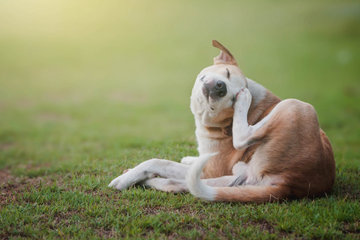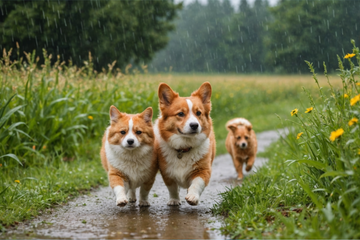There are 2 types of pet parents in the world: those who adore dogs and those who take care of them. Both of these types of people can be found in almost every home.
While the ones who adore dogs are blindsided by their joy at having a furry companion, the responsible ones are frequently faced with the misery of rescuing that new rug/sofa from pee and poo.
If you fall into the latter category, this blog is meant to make the process of potty training your pup less stressful.
As first time pet owners, most of us tend to become anxious helicopter parents. The responsibility of a delicate little fur ball can seem quite intimidating at first as we are so keen on doing things right. The most valid of all the concerns that new puppy parents have is:
“How do we train Pupper where to potty?”

Why is puppy litter care getting popular among pet owners?
Puppies, unlike adult dogs, need to poop at least 5 times every day. Besides a general rule of thumb is that your canine companion can hold her bladder approximately one hour for every month old they are. That in short means a lot of washroom breaks.
Taking your puppy for a walk every hour or two is nearly difficult in today's bustling lifestyle. Litter training is the solution adopted by most pet owners with puppies and kittens.
Puppies are born without the instinct to use a litter box like cats and they often end up using their own spot of choice as a toilet. It can be frustrating for owners who find themselves having to clean up after their pup. Fortunately, there are ways to teach your pup to keep its mess outside.
Litter training your puppy can help you spend less time cleaning and more time playing with your new pet friend. Puppy litter training is an important part of puppy care.
Types of Litters for your Pup
Once you bring home your new puppy, the first thing you need to do is set up its living space and litter tray. Unlike cats, dogs need a slightly bigger litter tray and have higher sides. The size of the tray differs depending on the breed of dog. Dogs are inquisitive by nature and eat nearly everything they aren’t supposed to. Therefore, you should be cautious of what materials you use for litter. The most common kinds of litter used by pet parents are:
1. Newspapers- Newspapers are the best and most cost-effective litter base materials available. Shredded papers and newspapers are easy to make at home (DIY newspaper litter) and can be replaced almost every day.
2. Clay- Bentonite clay, clumps together when wet and forms a solid mass separate from the other litter in the box. This solid clumped material can be scooped out and disposed of without changing the entire contents of the litter box.
3. Pellets- Pellets absorb the moisture and aid in odour masking. When introducing this method and training their dog to use it, pet parents should be cautious of the pup eating, chewing, excavating, and carrying dog litter pellets.
4. Faux Grass- Given that most dogs link grass with toilet time, this is the most natural concept.
Training your puppy to do their business
- Our canine friends can learn where to go potty surprisingly quickly, especially if you know how to teach them properly. The first step of puppy litter care involves training and showing your pooch the litter tray and getting him excited about it using his favourite treat.

3. Place your pup in the litter tray if you notice these signs or after he has had food or drink, so he can get acclimated to the potty spot. Reward your dog with lots of praise and some tasty dog treats once he has pooped in the appropriate area. The praise and treats will reinforce the desired behaviour.
4. Say something like "Go potty" every time you take your puppy to the bathroom, so he learns to associate these phrases with poop and excrete only in the appropriate places.
Litter training mistakes to avoid!
-
Avoid Ammonia-Based Products: Avoid using ammonia-based products to clean, as you may actually amplify the "bathroom smell". Cleaning puppy pee accidents using ammonia-based products, therefore, will only encourage your puppy to go potty in the same spot.

Check out Captain Zack’s PetMe Range is designed keeping your pet’s safety and health in mind.
-
Punishing Accidents: If you find an accident in the house but you didn’t catch your pupper in the act, just clean it up and move on. They will not connect their behaviour with the punishment, so they won’t learn what they did wrong.
Punishment may make them think you have a problem with poop and pee in general, which could lead to them feeling anxious about going potty at all.
Your puppy will be an adult in no time!
As your puppy enters adulthood, you can gradually train him to poo and pee outside by placing the litter tray in the balcony or in the garden at first, then taking him for walks.
So there you have it! Our step-by-step guide to house training your pupper.
The articles mentioned here are created from the experience – professional or personal of the contributors themselves. Please do not try anything without consulting your vet first. The views or opinions expressed on this platform belong solely to the contributors.





